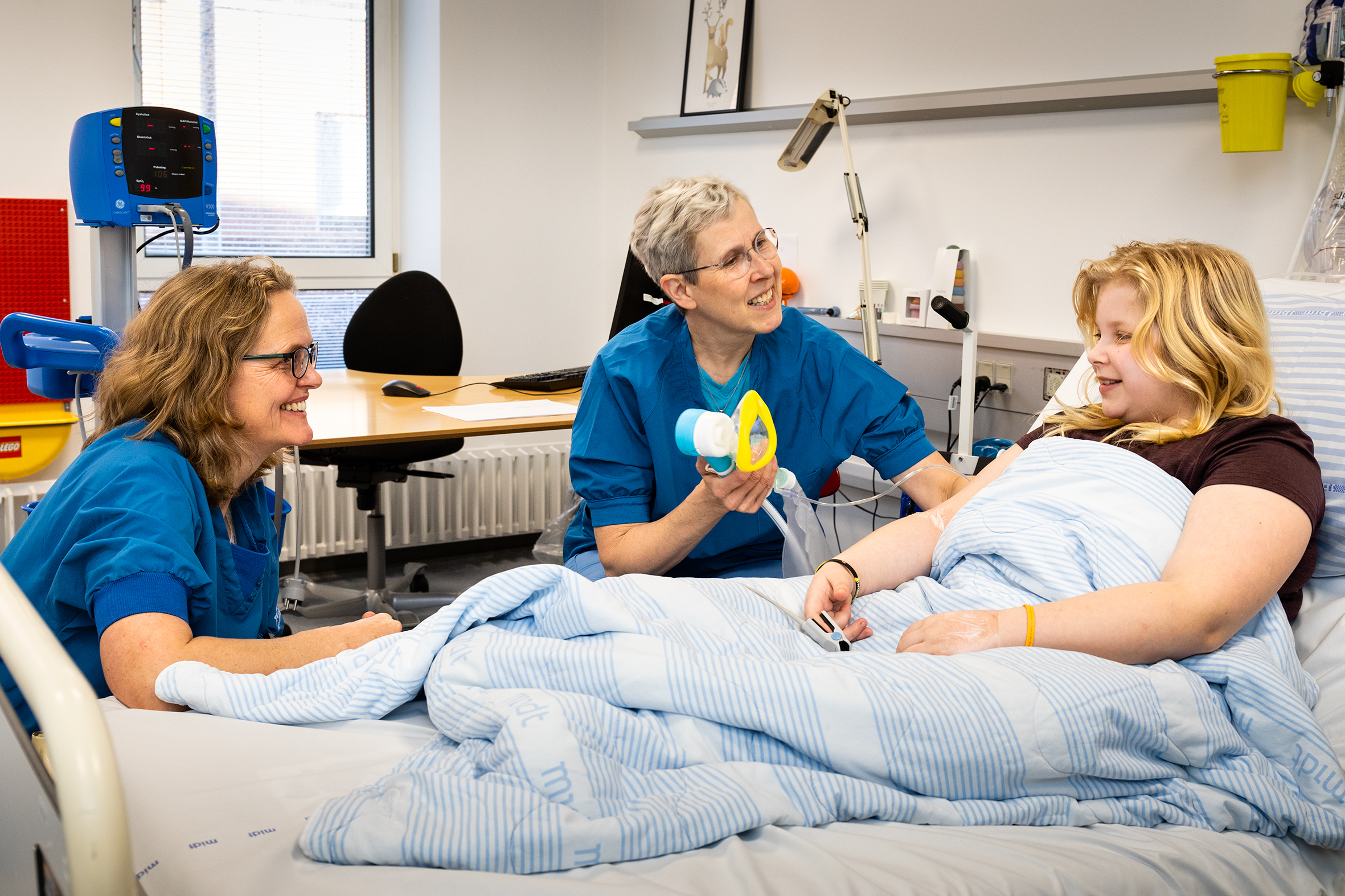Aarhus University Hospital is now a part of 13 new networks for rare diseases
10.02.22

At Centre for Rare Diseases, Aarhus University Hospital, patients with a rare disease can get diagnosed end receive specialised treatment (photo: Tonny Foghmar).
Patients at Aarhus University Hospital (AUH) with rare diseases can look forward to international world-class treatment.
The assessment started in 2019. Specific professional competencies as well as the overall competencies and resources at AUH have been thoroughly evaluated and the result is finally ready: AUH is now a member of 13 new European reference networks (ERNs) for rare diseases.
AUH is already a member of another four ERNs, and the hospital is now a member of 17 networks of a total of 24.
The 24 ERNs for rare diseases each cover a specific area e.g., liver disease, heart disease or cancer in children.
The idea behind the ERNs is that doctors and researchers from the EU member states can draw on each other’s expertise in particularly difficult cases. A doctor from Department of Clinical Genetics at AUH can present a case and suggest that certain experts in the network have a meeting focusing on this case. In other cases, AUH can help other networks by sharing their broad knowledge and expert advice.
- As a university hospital it is important to be among the best, also among those with the highest level of specialization. We show that we are among the best through our participation in the ERNs, says Claus Thomsen, Chief Medical Officer at AUH.
-At the same time, I of course hope that this will lead to good results for our patients because it is possible to discuss cases in the ERNs with colleagues from all over Europe.
Many benefits from AUH membership
Anders Bojesen, Head of department in Clinical Genetics, has been leading the ERN application process. He is convinced that there are many benefits from the AUH membership of the networks for rare diseases.
- Our experts get better at diagnosing and treating rare diseases. They form international networks, and they can use these networks to the benefit of our patients. Moreover, it is easier for our patients to take part of international trials or research projects, says Anders Bojesen.
- The application process has also created a stronger network internally between departments at AUH because our doctors and researchers have become aware of people at other departments who have knowledge about the disease, they work with themselves.
Clinic for rare type of cancer
An example of the network result at AUH is the work with the rare type of cancer Li-Fraumeni syndrome.
Through the network ERN GENTURIS (network for genetic tumour risk syndromes), the doctors at AUH became aware of the need for a clinical network, to better the follow-up and care of patients suffering from Li-Fraumeni syndrome. A special clinic has now been established at Department of Endocrinology and Internal Medicine where these patients are now followed. In this way, overview of the patient group has improved, and patients are now offered a more standardized programme of care and follow-up.
Facts:
AUH is now a part of the following 13 new European Reference Networks (ERNs):
ERN BOND: Bone diseases
ERKNet: Kidney diseases
ERN-RND: Nervous system diseases
ERN EuroBloodNet: Blood diseases
ERN EURO-NMD: Neuromuscular diseases
ERN EYE: Eye diseases
ERN GENTURIS: Genetic tumour risk syndrome
ERN GUARD-HEART: Heart diseases
ERN ITHACA: Congenital malformations and rare intellectual impairment
ERN PaedCan: Cancer in children
ERN RARE-LIVER: Liver diseases
ERN RITA: Immune system defects and autoinflammatory and autoimmune diseases
ERN VASCERN: Rare multi-systemic vascular diseases
Since 2017, AUH has been a member of the four ERNs:
Endo-ERN: Endocrinological diseases
ERN LUNG: Respiratory diseases
EURACAN: Cancer in adults (solid tumours)
ERN eUROGEN: Urogenital diseases
English website for European Reference Networks: https://ec.europa.eu/health/european-reference-networks/overview_en